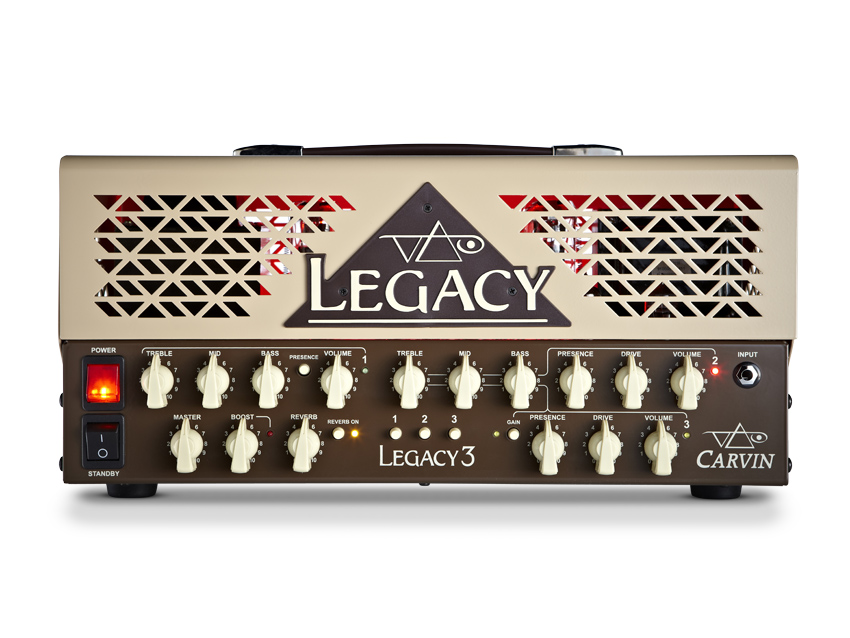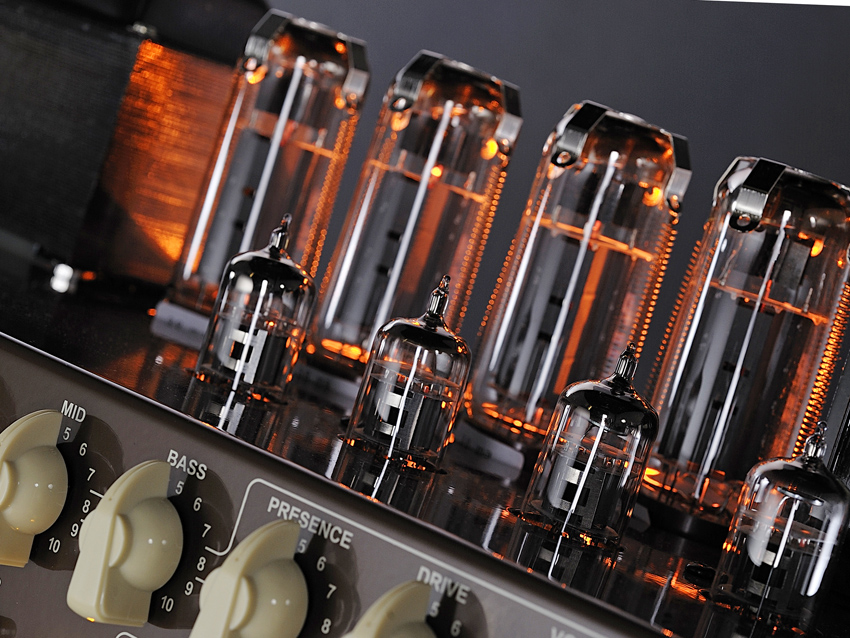MusicRadar Verdict
Finally, a high-powered, all-valve amp that comes in a more than portable package.
Pros
- +
Great tones; lovely clean channel; portable; LEDs.
Cons
- -
The assumption that you'll also need a specific guitar. We don't think that you do.
MusicRadar's got your back

Carvin VL300 Legacy 3

Carvin VL300 Legacy 3

Carvin VL300 Legacy 3

Carvin VL300 Legacy 3
Compared with the firm's standing in the US, Carvin has a fairly low profile here in the UK and players are in danger of missing out on some very tidy guitars and amps.
However, such is the furore that surrounds any release from the House of Vai, be it musical or equipment in nature, there's little chance of this new Carvin Legacy 3 passing anyone by.
"Clean channel three is gorgeous, mixing a Fender-style chime and brightness with a fatter, juicier low-end."
Vai himself outlines the development of the Legacy range as a whole on page 128, sofor now we'll point out the salient facts. This is a three-channel, all-valve affair that mixes genuine portability - it's reassuringly weighty, but easily carried in one hand - with a choice of output levels for live use as well as in the studio.
The amp can run at 100, 50 or 15 watts via a three-way slider switch on the rear panel, and even though the power section out of the box is based around EL34 valves, you can also fit 6L6s and bias accordingly with yet another switch.
Channels one and two are exactly the same - both technically and in use - as those found on the original Legacy. Channels two and three share a three-way EQ and augment the tone tailoring options with individual presence controls. Not only does channel three prove to be by far the dirtiest of the triumvirate, it also has an additional gain stage that can be switched in via the front panel, although sadly not with the optional FS44M footswitch.
"It's the completely filthy dirty channel," says Vai. "I use the second channel as my main rhythm sound and then I'll kick in a distortion pedal, but that means more electronics and it's hard to find a good one that doesn't take away the top end and lighten up the bottom. So the third channel is designed to kick in for those really intense kinds of overdrives."
Want all the hottest music and gear news, reviews, deals, features and more, direct to your inbox? Sign up here.
One feature Vai is especially keen on is the master section, which includes a volume, boost function and reverb control.
"I wanted a master volume that changes the level without changing the tone," he explains. "You've got it to sound the way you like, and then you gotta turn it down because you're tooloud and you lose all your mojo. With the Legacy 3, you can get your sound, then bring it up and down."
The boost function, which at its maximum setting adds a relatively subtle 6dB to the signal, can be selected with the footswitch. It's an easy method of upping the signal on demand, but you do need to turn it back off manually when changing channels because it's not automatically bypassed.
The internal lightshow, the hue of which changes with each channel selection, looks great, and it can be altered or even bypassed if you wish. In addition, there's an inexpensive chassis custom colour option - "the colour for me this year is Seafoam Green," jokes Vai.
There are a number of cabinet options available too, and of course there's no real need to use a Carvin cab at all if you don't want to. But we began our sound tests using the bespoke CT212S, an angled 2 x 12 loaded with Celestion Vintage 30s that stands vertically.
Sounds
As this is a Vai signature head, we reached for our battered Ibanez Blue Floral JEM and, before concentrating on each channel in turn, we had a quick flick around the three to get our bearings.
With channels two and three, we were struck by the rather muffled nature of the initial drive tones. However, this led to the discovery that the EQ section is among the most responsive we can remember playing with, especially on an out-and-out rock amp.
The trick is to balance the shared bass, middle and treble of the two hotter channels to obtain sounds you wish to use, and then use the independent presence controls to fine-tune. To give an idea of just how sensitive it is, turning channel two's presence knob from six to just under seven adds almost too much rasp, and although the process of dialling-in and balancing tones is an involved one, it must be remembered that this is a wholly pro amp.
Channel two is where the lion's share of suitable rhythm rock tones reside and, with the drive set to just over five, there is sufficient gain to enable us to rock out without sacrificing Vai's characteristic tonal clarity and string separation. The drive compresses markedly around seven, so keeping the setting below that helps to keep the tone transparent.
With identical control settings, channel three is slightly thicker and smoother. The balancing act here is to marry drive settings with crisp presence and the additional gain switch, which heaps drive upon drive to really extend musical sustain.
The footswitchable boost function adds up to 6dB of signal hike and is a gradual rather than immediate effect, which easily allows lead parts or licks to stand out across the whole amp. One downside is that, if you have the boost switched on and then go to another channel, the boost remains, requiring you to turn it off manually. As we've said many times before of course, MIDI switching is your friend in solving this inconvenience.
Clean channel three is gorgeous, mixing a Fender-style chime and brightness with a fatter, juicier low-end. The reverb, which is equally impressive, can be assigned to any and all channels and makes clean sections sing, whether using single-coils or mid-powered humbuckers.
The three power options give yet more tonal options, not least for recording, and the usual guidelines apply: 50 watts gives fatter gains at lower volumes, while the full 100 offers the best headroom for clean tones.
Other guitars used during our tests included the Gibson Les Paul Standard and Fender American Standard Strat, as well as a Charvel San Dimas and an EMG-loaded ESP, and each required a given level of EQ tweaks to tick the necessary boxes. However, none sounded as Vai-authentic as the JEM and, if nothing else, the fact that we can get sounds that are anywhere close to those of Mr Vai says a great deal about how sonically impressive the Legacy 3 is.
Don't be fooled by its size. Unlike similarly tonesome units such as the Orange Tiny Terror, H&K TubeMeister and Hayden MoFo, this is a full-powered, hand-wired, 100-watt amp and represents what we think is excellent value at just over a grand.
The Vai connotations notwithstanding, it's packed with great tones, not least those of the magnificent clean channel. From those sparkling yet rounded Fender-style chimes to all out high-gain mayhem, this is a versatile and very special amp. The audience is glistening…
Simon Bradley is a guitar and especially rock guitar expert who worked for Guitarist magazine and has in the past contributed to world-leading music and guitar titles like MusicRadar (obviously), Guitarist, Guitar World and Louder. What he doesn't know about Brian May's playing and, especially, the Red Special, isn't worth knowing.